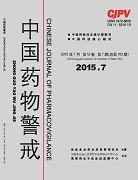|
|
Research of Inhibition Rate and Influential Factors on Normal Human Liver Cell Line Caused by 2,3,5,4-Tetrahydroxyl Diphenylethylene-2-o-glucoside
LI Na, MA Zhi-jie, MENG Ya-kun, WANG Ya, LI Xiao-fei, TU Can, ZHANG Ya-ming, NIU Ming, ZHAO Yan-ling, XIAO Xiao-he, KANG Ting-guo, YOU Yun, WANG Jia-bo
2015, 12(7):
385-388.
Objective To investigate the influence of different factors (glutathione, H2O2, temperature, etc.) on inhibition rate of 2,3,5,4-tetrahydroxyl diphenylethylene-2-o-glucoside (TSG) of various concentrations (300 μg·mL-1, 600 μg·mL-1, 1 200 μg·mL-1) on L-02 cell line. Methods Cultured human liver L-02 cell was given styrene glycosides treated in different ways and the absorbance determination was performed with MTS method. The inhibition rate was calculated by the inhibition rate formula. Results There was almost no inhibition rate in low concentration group (300 μg·mL-1). It showed certain inhibition rate in middle concentration group (600 μg·mL-1), but disappeared while glutathione added. The inhibition rate decreased significantly with the increment of the amount of GSH added in high concentration group (1 200 μg·mL-1), which was consistent with that of positive control monocrotaline (MCT). There existed obvious difference in inhibition rate (6%, 25%, 82%) among the three different concentrations of TSG. And there was little influence on inhibition rate of TSG while adding H2O2 of different concentrations (0.5%, 1%). The inhibition rate of TSG dried at different temperature (room temperature, 50℃, 90℃) and pH 3 was almost the same as that of untreated TSG. Conclusion There exists inhibition function for TSG to some extent within certain concentration range to liver cells, which has nothing to do with oxidation or hydrolyzation.
References |
Related Articles |
Metrics
|
